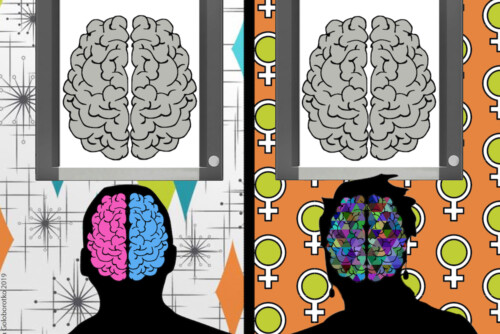In some ways, it is not surprising that, during this period of anxiety, there was an explosion of interest from the U.S. in transnational adoption. Middle-class domestic space had grown increasingly important, but more women were starting families late and struggling with fertility. Moral panics about “crack babies” and FAS left many who, in an earlier generation, might have adopted children from U.S. foster care leery of potential disabilities. A vision of unregulated markets was gaining real traction, and, at least ideologically, the state was in decline. Manufacturing plants began to move easily and repeatedly to wherever poverty was the greatest, assuring the lowest wages; Third World workers began to be seen as interchangeable, and babies entered this world as similarly mobile.
Adoption, like jobs, followed gradients of poverty and civil disruption. Wars in Korea and Vietnam produced the first big waves of transnational adoption, and then adoption followed in the wake of advancing neoliberalism and civil war. In the late ’70s and the ’80s, the most significant sending countries, besides South Korea, were Colombia, Peru, Guatemala, Chile, and Paraguay. 1 This is a striking list, as each was run by a right-wing government with close ties to the U.S., and each was engaged in a dirty war against leftist insurgents that included massive human rights violations against civilian populations and used “disappearances”—clandestine arrests, kidnapping, and murder—as a tactic of terror. 2
Activism by human rights groups like the Asociación Pro Búsqueda de Niñas y Niños Desaparecidos in El Salvador and Todos por el Reencuentro in Guatemala made it increasingly clear that child kidnapping, followed by adoption within the country or by a U.S. or European family, was also a tactic of political terror. 3 Court cases from Argentina to El Salvador used the disappearance and adoption of children as the major—sometimes the only—civil war crime that can be prosecuted. 4 As a result, organizations of parents of disappeared children and the grown children themselves have emerged as some of the most important groups in Latin America’s pro-democracy movements that demand legal accountability for war crimes.
In one place—Guatemala—rates of transnational adoption doubled in the year after the Peace Accords were signed and increased almost a hundred-fold within a decade. 5 Guatemala has been called the country where neoliberalism has advanced the farthest, at least in part because anti-Communism was most successful there. 6 For thirty years, the state tried to kill every trade unionist, member of an agrarian cooperative, intellectual, or member of a progressive political party, only to then turn to genocide of indigenous people, whom they suspected of someday possibly having progressive sympathies. When the killing was done, the leaders were pardoned and stayed in power. Those who kidnapped children and sold them through adoptions during the war continued to oppose the implementation of international human rights frameworks for adoption. Despite repeated reforms, each a tacit admission that perhaps all was not well before, many still regard the Guatemalan adoption system, in the words of one human rights lawyer, as “a nest of corruption.” 7
To return, then, to the story with which I began, the conditions under which middle-class U.S. households decide to hire Latin American women to do household labor or adopt Guatemalan babies, or that Guatemalan women decide to migrate or relinquish their children for adoption, have changed dramatically since 1970. I have tried to describe the historical, material contexts in which individuals do or do not make these choices and to characterize some of the things that have made them more likely in this post-Cold War moment in vigorously neoliberal states like the U.S. and Guatemala. Privatization has meant the expansion of “the private” for some and its virtual evisceration for others. We have understood neoliberalism to be about states and economies, but it is at least as true to say that it is a story about families.
- Evan B. Donaldson Adoption Insititute: International Adoption Facts (Evan B. Donaldson Adoption Insititute, 2003 [cited August 30 2007]); available from http://www.adoptioninstitute.org/FactOverview/international.html.[↑]
- See e.g., Greg Grandin, The Last Colonial Massacre : Latin America in the Cold War (Chicago; London: University of Chicago Press, 2004); Steve Stern, Remembering Pinochet’s Chile: On the Eve of London 1998, The Memory Box of Pinochet’s Chile (Durham: Duke, 2004); Winifred Tate, “Paramilitaries in Colombia,” Brown Journal of World Affairs 8, no. 1 (2001); Angela Cornell and Kenneth Roberts, “Democracy, Counter-Insurgency, and Human Rights: The Case of Peru,” Human Rights Quarterly 12 (1990); Alma Guillermoprieto, “Letter from Lima,” New Yorker, October 29 1990; Amnesty International, “Amnesty International Report 2003: Paraguay,” (New York: Amnesty International, 2003).[↑]
- Personal communication. Jon Cortina, Pro-Busqueda, July 2005; Pedro Gregoria Santiago, Liga Guatemalteca para Higiene Mental, August 2007; see also Discovering Dominga, articles from Proceso, above, unsigned, “Aún En Busca De Los Niños Que La Guerra Se Llevó,” SwissInfo, October 6, 2006.[↑]
- The lawyers at la Asociacion Pro Búsqueda los Niños y Niñas Desaparecidos helped me understand why this was so critical. Laura Briggs, “Interview with Zaira Navas, Attorney for Pro Búsqueda,” (San Salvador, El Salvador: 2005).The Mexican magazine Proceso has also been covering this unfolding story. Juan José Dalton, “Ante La Corte Interamericana,” Proceso, 22 marzo 2005; Juan José Dalton, “Cicatrices No Cerradas De La Guerra,” Proceso, 25 October 2003; Juan José Dalton, “El Salvador: La Deuda Con Los Niños Deaparecidos,” Proceso, 8 March 2003; Marcelo Izquierdo, “Abuelas De La Plaza De Mayo: 25 Años De Búsqueda,” Proceso, 25 October 2002.[↑]
- See http://travel.state.gov/family/adoption/stats/stats_451.html (accessed January 19, 2006).[↑]
- John T. Way, “The Mayan in the Mall: Development, Culture and Globalization in Guatemala, 1920-2003” (Yale University, 2006).[↑]
- Inés Benítez, “Guatemala: Whitewash for ‘Adoption Paradise’,” Inter Press Service, June 5, 2007.[↑]



